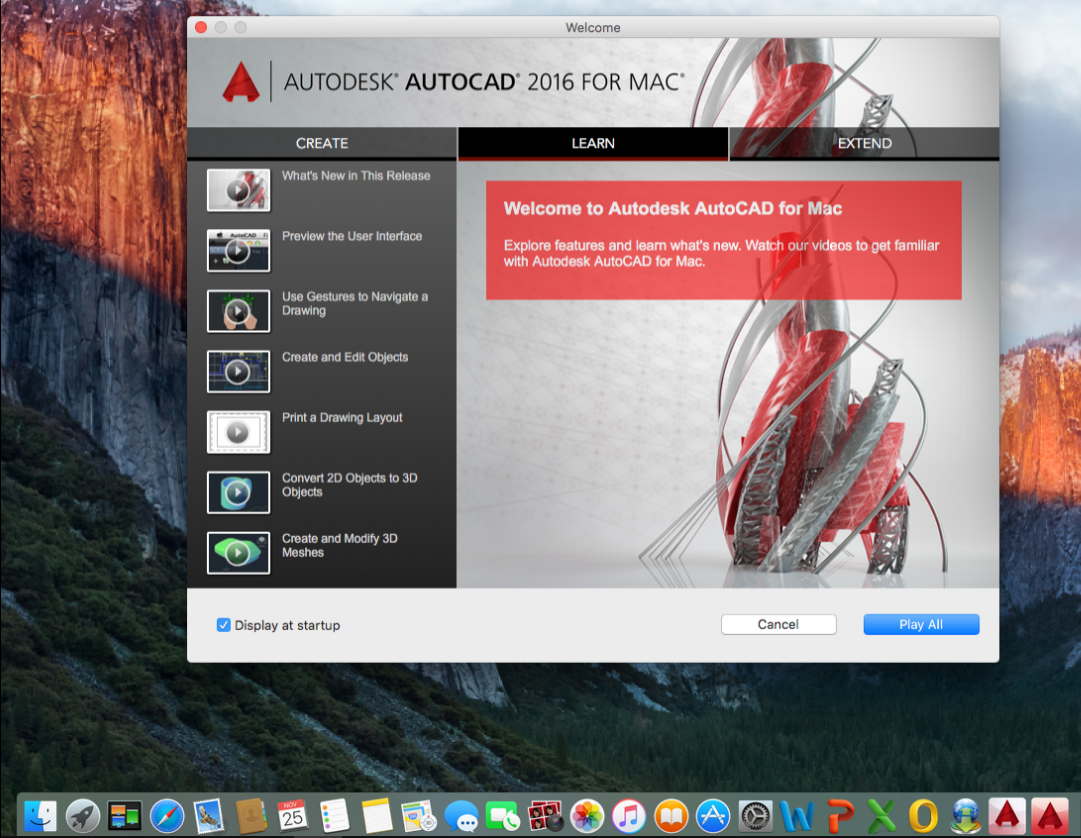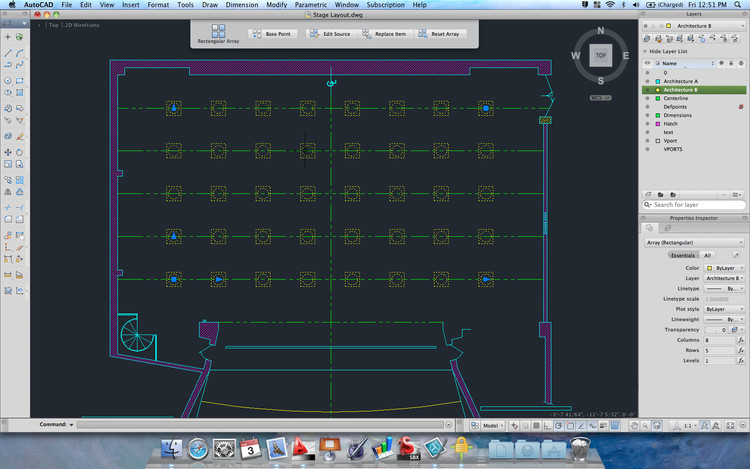- Tool Palette In Autocad
- Autocad Lt For Mac Hatch Tool Palettes
- Autocad Lt For Mac Subscription
- Free Autocad Tool Palettes
Tool Palettes are one of the best CAD Management tools out there. If you’re looking to set symbol and layer standards, provide your staff with easy access to utilities, or put together a nice set of standard details then the tool palette is the place you want to start. The tool palette is a free-floating tab that you can bring up on screen and keep active while you work in your drawing, so you have quick access to common symbols, commands, and most any other tool you need to draft with. Think of it as a large, mobile, easily customizable toolbar and you won’t be wrong.
- Gradient fill tools switch to hatch tools in AutoCAD LT. Raster image tools do not work in AutoCAD LT. Note If a tool palette file is set with a read-only attribute, a lock icon is displayed in a lower corner of the tool palette.
- Jan 04, 2016 Tool Palette in AutoCAD LT for Mac 2016 I've created a set of Tool Palletes with some default settings that I really want him to have access to, but I cannot for the life of me figure out where to go to load it into the AutoCAD LT for MAC.
Hatches in AutoCAD that are added from a tool palette are not being placed on the layer specified in the tool. Instead they come in on the current layer or the wrong layer. The HPLAYER system variable is set to something other than 'Use Current' Set the HPLAYER system variable to '.' For 'Use Current' and the layer specified in the tool will be used for the hatch pattern.
Tool Palette In Autocad
Working With Tool Palette Groups
AutoCAD products come with a vast array of tools already loaded into your palette. They will vary, depending upon which vertical product you install, such as Civil 3D, AutoCAD Electrical or even just plain “vanilla” AutoCAD. You can turn the tool palette on/off using the toggle button on the Home tab of the ribbon panel or by typing TOOLPALETTES at the command line. The tool palette is divided into two categories: Groups and Palettes.
Groups: Groups are top-level folder structures that allow you to organize your tools into reasonably sized sections. In the example above, the standard AutoCAD palette has sections for Architectural, Civil, Structural, etc. symbols and tools so you can quickly access what you need. You can create your own Groups to organize company standards, use the ones that ship with your version of AutoCAD, or mix and match both together. We’ll explain how to customize your tool palettes later on in this tutorial.
Working With Tool Palettes
Palettes: Within each Group, you can create multiple palettes (tabs) that let you further sub-divide and structure your tools. In the above example, We are in the Civil Multiview Blocks Group (Civil 3D) and you can see that we have palettes for Highways, External Works, Landscape, and Building Footprints. This is a very convenient way of limiting the number of tools displayed to your users at any given time. Git merge tool mac. You could put all the functions on a single palette of course, but having to scroll through several hundred functions to find the one you want sort of defeats the purpose. Remember, we want to increase productivity by helping users find what they need quicker. By breaking your tools down into organized palettes, the user can select the category they need and only have a small group of tools to choose from.
Using Tool Palettes
To use a tool from the palette you can simply click on it, or you can drag/drop it into your file. The nice thing about these tools is that as CAD Manager, you can set all the variables for using them right on the palette so that users don’t have to worry about settings, they can just click on the symbol or command and run it. You set these options by right-clicking on the tool and choosing the “properties” option. In the example above, we’ve set the Layer property for this symbol to C-ROAD-FEAT so that, regardless of what the current layer is when the user inserts this symbol into their drawing, it will always be placed on the C-ROAD-FEAT layer. As you can see, we have many other settings, such as color, line type, etc. that can be predefined to control how all the tools function, without having to depend on users to choose the correct settings.

Customizing Tool Palettes
The true power in tool palettes lies in the ability to customize them for your company standard symbols and commands. Customizing the palettes is pretty simple. To begin, right-click the grey title bar on the side of the palette and select the “Customize Palettes” option. This brings up a dialog box (above) that gives you areas for adding New Groups and Palettes. You create new Palettes on the left side of the screen by right-clicking and selecting “new palette”, and add new Groups in the same manner on the right side. Quick heal removal tool download. You add Palettes to your Group simply by drag/drop from the left pane to the right pane.
CafeTran Espresso 2012 has been released Dec 23, 2011 The Internet, December 23, 2011 - Release of CafeTran Espresso 2012 for OS X, Linux and Windows Dear Cafetranslators, It is my pleasure to announce officially the new version of CafeTran called CafeTran Espresso 2012. I am running the PB G4 1.5 GHz, Jedit X 2, MS Word 2004 (forget 2008 and latest Safari and Opera. It features a lot changes in the user interface to make it much more intuitive and user friendly. I've been using the program for years for czech/english and czech/german translations and it plays well with them in both rich and plain text. Translation tool for mac.
Keep in mind that you can also “nest” Groups to create branching sub-options. We do this with our company standard details. At the top level, we have a group called “Details” which, when you hover over it, then displays options for “Landscaping” and “Drainage”. Each sub-group contains multiple palettes for items pertaining to that group, such as tree symbols, light symbols, etc.
Adding Tools To The Palette
Once you’ve set your Groups and Palette structure, you’re ready to add the actual tools, commands, symbols, etc. that you want your users to access. To add symbols, you can drag/drop them from inside your open drawing or, if you’re working from a networked standards location, you can drag/drop the files you want right from Windows Explorer and release them onto your palette as shown in the example above. You can also add any custom commands or lisp files you’ve developed in a similar manner, just run the CUI command and drag/drop your commands from one dialog box to the other.
You can even drag and drop drawn items onto your palette. If you have a line drawn on a particular layer, with a particular line type that you want to be able to use regularly, you can just drag/drop that onto your palette and whenever you want to create a line of that type, just click on it and AutoCAD will run the line command with all the same parameters set for you. Think how easily you could draw tree lines or grid center lines on an architectural plan that way.
Jun 24, 2010 Network Monitor 3.4 is the archived version protocol analyzer and is no longer under development. Microsoft Message Analyzer is the replacement for Network Monitor 3.4. Microsoft Message Analyzer supports the latest protocol parsers for capturing, displaying, and analyzing protocol messaging traffic, events, and other system or application. Netmon tool for mac. Aug 10, 2011 Network Monitoring is a Sniffing or Monitoring Program used to Identify and Isolate issues related to Networks or Applications communicating over a Network. The Current Release for Network Monitor is 3.4 and can be downloaded here. There are 3 versions available: NM32_IA64_setup.exe 6.4 MB. Winclone is a tool from Twocanoes Software that creates a clone of the Windows Boot Camp partition for recovery or migration to another Mac. (Pricing starts at $29.99 for an individual license. About XnetBITcom Xnet is a native Mac OS X network and server monitoring tool,developed in Cocoa, with a beautiful Aqua interface, supporting all common internet services likehttp, ftp, telnet, pop3 a. A Unix network monitoring application that runs in Apples X11 environment. If you want a network monitoring tool that makes your Mac bulletproof without needing lots of technical knowledge, Little Snitch is the best network monitoring software for Mac users out there. You can extend its functionality with the companion app Radio Silence which acts as a firewall and more powerful network monitor for your Mac (see.
Sharing Your Palettes
To share your customized palettes with everyone in your CAD group, copy the folder containing the palettes out to a shared network location. You can find where your tool palettes are located by going to the TOOLS > OPTIONS function and looking at the “Tool Palette Files Location” path as shown above. Use the “Browse” button to change that path to the shared network location you want everyone to use. Lastly, you’ll want to find the “Profile.aws” file from you source system, such as: C:UsersYOUR NAMEApplication DataAutodeskC3D 2012enuSupportProfilesC3D_Imperial, which is where our Civil 3D profile is located, and copy it to the same location on every user’s machine.

Autocad Lt For Mac Hatch Tool Palettes
There you have it: simple steps to creating a fully customize tool palette for your users! How are you working with tool palettes at your firm? Anything you want to add to this conversation?